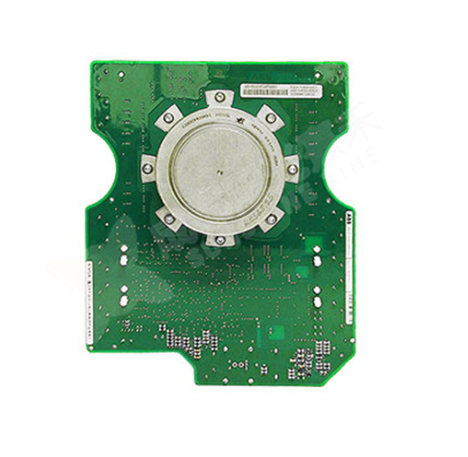The development and future prospect of urban sewage treatment
1.1 Practice history of urban sewage treatment in China
1.1 Late development
Water pollution control is now one of the most pressing challenges facing China. In the fight against environmental pollution, wastewater treatment plays a vital role. Although China has the world's largest wastewater treatment capacity and market, its development history is actually very short. Compared with industrialized countries that had widely implemented wastewater management a century ago, China's wastewater management was almost blank 40 years ago.
1.2 Rapid development in the past 40 years
Since the reform and development in 1979, China has entered a period of rapid development. With the rapid economic development and urbanization, the amount of urban sewage has increased sharply, and because more and more industrial wastewater enters the sewer, the composition of wastewater has become more and more complex. As the discharge of wastewater into the environment increases. Increased environmental pollution directly threatens urban water and food security, so water pollution control is urgently needed. To address this challenge, China has begun to build more centralized wastewater treatment plants and supplementary facilities.
However, the development rate and treatment capacity of wastewater treatment plants and auxiliary facilities (especially sewers and sludge treatment systems) still lag behind China's economic growth and industrial development. Overall water quality continues to decline, forcing the Chinese government to implement stricter pollution control strategies.
In 2007, a massive algae bloom occurred in Taihu Lake due to severe eutrophication of the water body, which seriously threatened the drinking water safety of nearby cities. Since then, local governments have begun to enforce stricter discharge standards for wastewater from sewage treatment plants. A year later, the first wastewater treatment plant to implement the Grade A wastewater discharge standard (GB 18918-2002) was put into use in Wuxi.
The pollution of China's water environment has also exacerbated water shortages, especially in northern China, which has created an urgent need for wastewater recycling and reuse. Beijing has pioneered this and has made great strides in building water recycling infrastructure.

In 2016, Beijing Gaobeidian Sewage Treatment Plant was upgraded to a recycled water plant with a treatment capacity of 1 million m³/d, announcing China's transition from simple treatment to recycled treatment. But China's overall water recovery rate is still low compared to many developed countries, and because of its relatively low quality, reclaimed water is mainly reused as landscape water. At this stage, the price of reclaimed wastewater remains uncompetitive with conventional water supply, and the establishment of reclaimed water infrastructure and programs has been slow.
2. Today's challenges and achievements
2.1 Notable achievements in the field of sewage treatment in China
After nearly 40 years of spectacular development, China now has the largest municipal wastewater infrastructure in the world. By the end of 2018, China had built more than 5,000 municipal sewage treatment plants with a daily treatment capacity of nearly 200 million m3/d. By 2018, the sewage treatment rate had reached more than 90 percent.
The construction of wastewater treatment plants is just one part of the rapid growth of China's wastewater treatment industry. Thanks to its strong national administrative system and the valuable experience of developed countries, China has made great strides in the construction and management of wastewater infrastructure in the past 40 years. The total market value and operational capacity of China's water companies are at the leading level in the world. The wastewater management model has also shifted from a single government-led construction and operation model to multiple systems involving government and business. This transformation has not only reduced the financial burden of the government to a certain extent, but also improved the construction and operation efficiency of wastewater treatment facilities.
China also now has the world's largest research team in water management, thanks to a steady increase in funding that far exceeds that of any other region in the world. China's innovation capacity and international competitiveness can be seen from the publications, and China's total number of SCI papers in the field of water research is second only to the United States. Such excellent innovation ability has laid a solid foundation for the future revolution of China's wastewater management model and treatment technology.
2.2 Remaining gaps and challenges
(1) The design and operation of the water plant is inconsistent with the requirements of sustainable development. At present, improving the pollutant removal rate is still the core objective of wastewater treatment plant operation, and the Grade A wastewater standard is increasingly adopted in wastewater treatment plants nationwide. To this end, most plants have eliminated primary sedimentation tanks, implemented delayed aeration processes, and added some biological filters to improve nitrogen removal rates. This increases energy chemical consumption and therefore makes wastewater treatment plants indirectly a non-negligible source of greenhouse gas emissions.
(2) The lagging development of the sewer system. This, on the one hand, leads to inadequate wastewater collection (approximately 90% sewer access rate in 2018) and, on the other hand, to a low sewage treatment plant operation rate (86%). Such inadequate municipal wastewater collection coupled with stormwater dilution significantly reduces organic strength while increasing pollutant complexity at wastewater treatment plant intakes.
As a result, the organic matter in the wastewater was insufficient to support denitrification and anaerobic sludge digestion. The low organic content and high sediment content of wastewater sludge make it impossible for anaerobic digestion treatment. It is estimated that less than 3% of China's wastewater treatment plants are equipped with anaerobic digestion facilities, and a significant number of them are not functioning well. As a result, there is basically no energy recovery in China's sewage treatment plants, let alone the recovery of nutrient resources. How to improve the sustainability of wastewater treatment in China remains a key issue to be solved.
(3) The connection between the wastewater discharge standards of sewage treatment plants and local conditions and environmental protection requirements is not close. The geographical diversity of wastewater nature, environmental conditions and level of economic development in China means that it is necessary for different wastewater treatment plants to adopt a tailored approach, flexible technology and wastewater discharge standards, rather than the uniform model currently prevailing.
At present, a new round of upgrading of wastewater treatment plant discharge standards is under consideration for regional differences. But the new standard sets limits for special pollutants that are close to Level 4 surface water quality standards. A central dispute is whether it is necessary and economically feasible to implement such stringent emissions standards across the country.

(4) The treatment of sludge in sewage treatment plants has received little attention. As a result, a large amount of contaminant-enriched sludge from sewage treatment plants ends up returning to the environment without proper disposal as another source of pollution. On the other hand, the operation of sewage treatment plants often disturbs the lives of nearby residents due to the smell and noise generated. With the development of urbanization, this problem becomes more and more prominent, and many existing sewage treatment plants are gradually surrounded by urban communities. Therefore, establishing a harmonious relationship between the environment and human society in the sewage treatment plant poses another challenge to China's wastewater management.
Step 3 Look ahead
3.1 Future wastewater management objectives
Although there are disputes over specific discharge standards, it is certain that China's wastewater industry will implement more stringent and global water pollution controls in the future. In fact, many provinces and cities such as Beijing, Tianjin, Jiangsu, Zhejiang and Hunan have started to implement stricter wastewater standards for local sewage treatment plants. In line with international trends, the next step will be to strengthen controls on emerging pollutants and water recycling, which is still in its infancy in China. Therefore, the goal of wastewater management has shifted from reducing pollutants to water reuse, resource recovery and water ecological restoration. This shift in purpose is reflected in China's recent policy revolution.
3.2 Policy Formulation
For many years, China has followed the end-pipe pollution control strategy, which emphasizes wastewater treatment and water environment remediation. However, the overall environmental quality has not been significantly improved. In 2015, the Chinese government issued the Water Pollution Control Action Plan, ushering in a new era of water environmental protection aimed at improving overall quality. Water ecology, not simple water quality control. This means that the field of pollution control will be extended from sewage treatment plants to sewer networks upstream and rivers and wetlands downstream. Therefore, it is encouraged to simply and uniformly improve the effluent standard of sewage treatment plants, rather than simply improve the sewage collection and sludge treatment capacity of sewage treatment plants. Recent guidelines issued by the Chinese government emphasize the urgency of overcoming the bottlenecks of inadequate wastewater collection and poor treatment facilities.
3.3 Technical Fields
The achievement of the above wastewater management objectives will depend on the development of more effective and sustainable pollution control strategies. In terms of wastewater treatment, treatment technology has mainly developed in three directions:
(1) Improve activated sludge process. A typical example is aerobic granular sludge. Due to the advantages of good wastewater quality, energy saving, and small footprint, the process has been intensively studied over the past decade and has now been successfully demonstrated in multiple wastewater treatment plants in Europe and Africa.
(2) Implementation of innovative technologies. The representative new technology is anaerobic ammonia oxidation, which effectively circumvents the traditional nitrification/denitrification route, thus greatly reducing energy consumption, and effectively realizes energy-producing carbon bioconversion processes, such as anaerobic membrane bioreactors.
(3) The development of efficient facilities and materials and better process control techniques can optimize water plant operations. Advances in this area include the development of effective carrier materials for biofilm growth, better aeration equipment for efficient oxygen supply, advanced membrane technology to improve wastewater quality, and on-line monitoring/intelligent control technology to improve process stability. In particular, recent developments in low-pollution ultrafiltration and reverse osmosis technologies are making it possible to recycle wastewater at scale and steadily.

While resource-oriented wastewater treatment is gradually becoming the theme of the global wastewater industry, China is also actively exploring its own path. In order to transform sewage treatment plants from pollutant removal sites into factories for energy, water and fertilizer as well as integral parts of urban ecosystems, in 2014, several experts from Chinese research institutions, universities and government departments jointly proposed the construction of a completely new value-added wastewater treatment plant. Due to its forward-looking and exploratory nature, the plant is expected to be built in the next few years and serve as a pilot plant to guide the large-scale, sustainable treatment of wastewater in the near future.
Therefore, it is named "New concept sewage treatment plant". The plant aims to achieve the four-fold goals of sustainable water supply, energy self-sufficiency operation, resource recovery and environmental harmony by integrating various innovative designs and leading technologies. In 2018, the first groundbreaking conceptual wastewater treatment plant was completed in Wuxi, Jiangsu Province, opening a new chapter in sustainable wastewater management and urban water ecological harmony in China.
4. Conclusion
Looking back on China's rapid development history of more than 40 years, there are both impressive achievements and many shortcomings. Although China has almost completed the construction of wastewater infrastructure at a rate far exceeding that of Western countries, many problems remain, including underdeveloped sewer and sludge treatment facilities, high energy consumption, inadequate operational performance, and poor linkages between wastewater discharge standards at sewage treatment plants. As well as local conditions and environmental protection needs, the global idea of harmonious development between man and nature is lacking.
Looking ahead, there will be increasing challenges and uncertainties due to multiple pressures such as environmental protection, economic development and water scarcity, especially as China is transitioning from a developing country to a developed one. Addressing these challenges requires China's wastewater treatment sector to explore its unique path of sustainable development based on its own characteristics and needs, including the development of new concept plants to highlight resource recycling and establish an integrated and harmonious water ecology.
- EMERSON
- Honeywell
- CTI
- Rolls-Royce
- General Electric
- Woodward
- Yaskawa
- xYCOM
- Motorola
- Siemens
- Rockwell
- ABB
- B&R
- HIMA
- Construction site
- electricity
- Automobile market
- PLC
- DCS
- Motor drivers
- VSD
- Implications
- cement
- CO2
- CEM
- methane
- Artificial intelligence
- Titanic
- Solar energy
- Hydrogen fuel cell
- Hydrogen and fuel cells
- Hydrogen and oxygen fuel cells
- tyre
- Chemical fiber
- dynamo
- corpuscle
- Pulp and paper
- printing
- fossil
- FANUC
- Food and beverage
- Life science
- Sewage treatment
- Personal care
- electricity
- boats
- infrastructure
- Automobile industry
- metallurgy
- Nuclear power generation
- Geothermal power generation
- Water and wastewater
- Infrastructure construction
- Mine hazard
- steel
- papermaking
- Natural gas industry
- Infrastructure construction
- Power and energy
- Rubber and plastic
- Renewable energy
- pharmacy
- mining
- Plastic industry
- Schneider
- Kongsberg
- NI
- Wind energy
- International petroleum
- International new energy network
- gas
- WATLOW
- ProSoft
- SEW
- wind
- ADVANCED
- Reliance
- YOKOGAWA
- TRICONEX
- FOXBORO
- METSO
- MAN
- Advantest
- ADVANCED
- ALSTOM
- Control Wave
- AB
- AMAT
- STUDER
- KONGSBERG
- MOTOROLA
- DANAHER MOTION
- Bently
- Galil
- EATON
- MOLEX
- Triconex
- DEIF
- B&W
- ZYGO
- Aerotech
- DANFOSS
- KOLLMORGEN
- Beijer
- Endress+Hauser
- MOOG
- KB
- Moxa
- Rexroth


Email:wang@kongjiangauto.com
























































































































